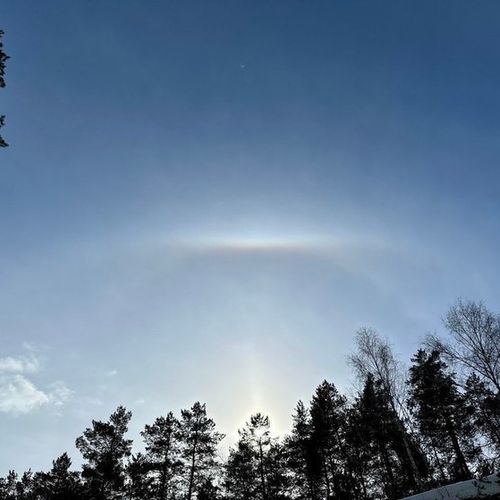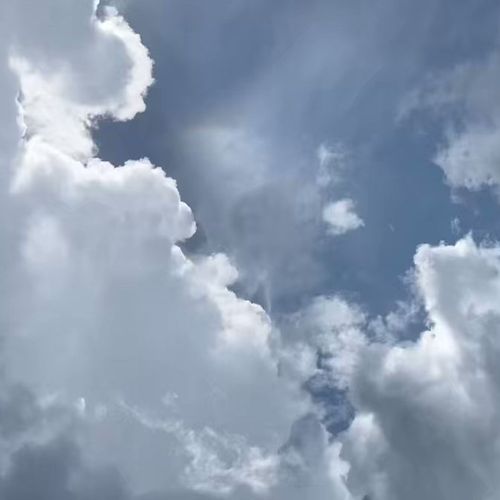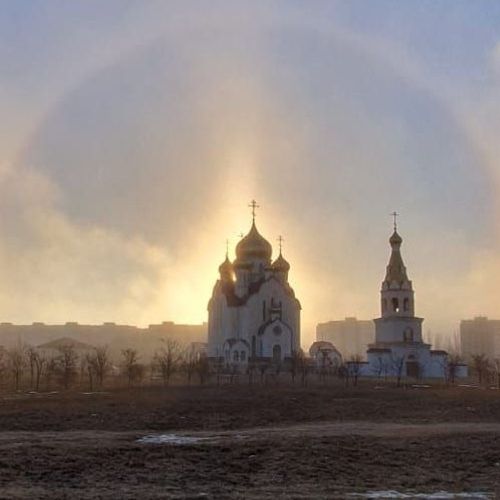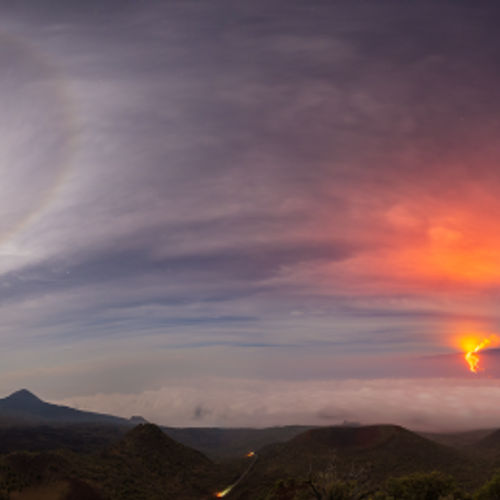
| Added | Sat, 23/07/2022 |
| Источники | |
| Дата публикации | Sat, 23/07/2022
|
| Версии |
For the first time in the history of observations, scientists from Helsinki and Ural Federal Universities Yarmo Moilanen and Maria Gritsevich systematized information about all forms of atmospheric halos recorded by mankind at the end of 2021.
From numerous sources of data on observations of halos, the history of which dates back 4-5 millennia, today 119 different forms of atmospheric halos are known (there are also extra-atmospheric halos and halos that can be seen on various surfaces).
An article describing the work was published in the Journal of Quantitative Spectroscopy and Radioactive Transfer.
Atmospheric halos are a phenomenon of light scattering caused by the accumulation of water ice crystals in the atmosphere with a size of less than 10 micrometers. The combination of the shape of ice crystals (or minerals), their orientation and the paths of light rays passing through the crystals determines the configuration of the halo, whether it is colored or white rings, spots or arcs. In other words, the shape of the halo can be used to judge the types of ice crystals present in the atmosphere.
The halo can be observed with the naked eye at all levels of the troposphere — the lower layers of the atmosphere with a height of 8-18 km. Halos are most often seen in high ice clouds: in clouds of the middle or lower level, ice crystals are often too weak from an optical point of view to create a halo. Most of the best manifestations of the halo were observed in clouds of tiny ice crystals in the surface layer of the atmosphere — the so-called diamond dust.
The oldest mentions of the halo are from 4 to 5 thousand years old: information about the halo is recorded on cuneiform tablets of the Sumero-Babylonian culture. At the time of Aristotle, at least three forms of halos were known. One of the oldest observations of the halo in Jerusalem dates back to the beginning of the XII century. By 1820, the number of registered halos was about 20, by 1990 - 60. Since then, the number of registered halos has doubled and now stands at 119.
Significant progress in documenting the halo has occurred due to the proliferation of mobile phones with photo and video cameras. The authors of the article urge the general public to record the observed halos and, thus, contribute to the research of these phenomena and to the discovery of new ones. So, the launch of an automatic camera in Paris in the early 2010s gave an idea of how outdated the previous statistics were: it turned out that some halos, which were considered extremely rare, are much more widespread.
The rapid growth in the number of new halos in 2007-2008 and 2016-2017 (a total of 24 new halos) is largely due to the active "hunting" for them by enthusiast Marko Riikonen, who photographed halos formed by ice crystals created by snow cannons in ski resorts in Finland.
Новости со схожими версиями
Log in or register to post comments









